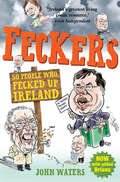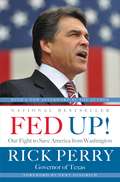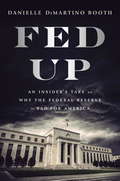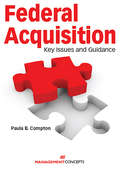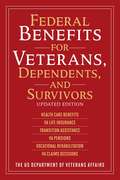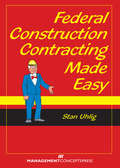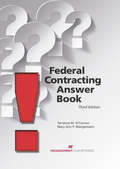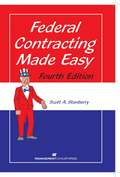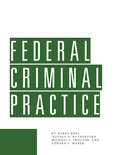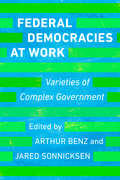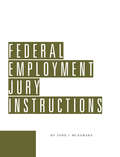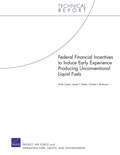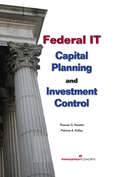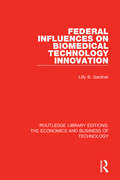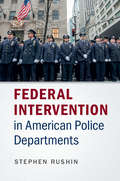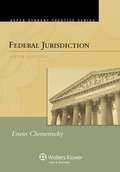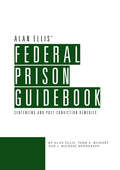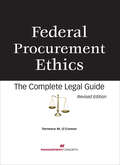- Table View
- List View
Feather in the Storm
by Emily Wu Larry EngelmannEmily Wu's account of her childhood under Mao opens on her third birthday, as she meets her father for the first time in a concentration camp. A well-known academic, her father had been designated an "ultra-rightist" and class enemy. As a result, Wu's family would be torn apart and subjected to unending humiliation and abuse. Wu recounts this hidden holocaust in which millions of children and their families died. Feather in the Storm is an unforgettable story of the courage of one child in a quicksand world of endless terror.From the Trade Paperback edition.
Feckers: 50 People Who Fecked Up Ireland
by John WatersWhich 50 People turned Ireland into the fecked-up country she is today? Bono? Haughey? Louis Walsh? de Valera? It's time to name and shame the great, the good and the gobshites...Conventional wisdom has it that Ireland, after a violent and tragic history, had began to get things right. But when the ill wind of recession cruelly snatched that self-satisfied achievement away, it all seemed like exceedingly back luck.In his 50 brilliantly acerbic portraits Waters reveals a consistent pattern of self-delusion, myopia, inferiority complex, bravado, defeatism, cynicism, sentimentalism and conceit. He traces Ireland's story from the paranoid insularism and cultural myopia that followed national Independence, though the post-Sixties obsession with a faux 'self-confidence', to the final, salutary meltdown of the Celtic Tiger, and strangely lacking either Celts or tigers.Once among the oldest civilization in Europe, Ireland has ended up as a second-rate version of the England it tried to discard. It threw out not merely the bathwater and the baby, but also the bathtub, the sponge and the rubber duck...
Feckers: 50 People Who Fecked Up Ireland
by John WatersWhich 50 People turned Ireland into the fecked-up country she is today? Bono? Haughey? Louis Walsh? de Valera? It's time to name and shame the great, the good and the gobshites...Conventional wisdom has it that Ireland, after a violent and tragic history, had began to get things right. But when the ill wind of recession cruelly snatched that self-satisfied achievement away, it all seemed like exceedingly back luck.In his 50 brilliantly acerbic portraits Waters reveals a consistent pattern of self-delusion, myopia, inferiority complex, bravado, defeatism, cynicism, sentimentalism and conceit. He traces Ireland's story from the paranoid insularism and cultural myopia that followed national Independence, though the post-Sixties obsession with a faux 'self-confidence', to the final, salutary meltdown of the Celtic Tiger, and strangely lacking either Celts or tigers.Once among the oldest civilization in Europe, Ireland has ended up as a second-rate version of the England it tried to discard. It threw out not merely the bathwater and the baby, but also the bathtub, the sponge and the rubber duck...
Fed Up!: Our Fight to Save America from Washington
by Newt Gingrich Rick PerryNow, do not misunderstand me, America is great.But we are fed up with being over-taxed and over-regulated. We are tired of being told how much salt to put on our food, what kind of cars we can drive, what kinds of guns we can own, what kind of prayers we are allowed to say and where we can say them, what we are allowed to do to elect political candidates, what kind of energy we can use, what doctor we can see. What kind of nation are we becoming? I fear it's the very kind the Colonists fought against.But perhaps most of all, we are fed up because deep down we know how great America has always been, how many great things the people do in spite of their government, and how great the nation can be in the future if government will just get out of the way.Our fight is clear. We must step up and retake the reins of our government from a Washington establishment that has abused our trust. We must empower states to fight for our beliefs, elect only leaders who are on our team, set out to remind our fellow Americans why liberty is guaranteed in the Constitution, and take concrete steps to take back our country. The American people have never sat idle when liberty's trumpet sounds the call to battle-and today that battle is for the soul of America.
Fed Up: An Insider's Take on Why the Federal Reserve is Bad for America
by Danielle Dimartino BoothA Federal Reserve insider pulls back the curtain on the secretive institution that controls America’s economy After correctly predicting the housing crash of 2008 and quitting her high-ranking Wall Street job, Danielle DiMartino Booth was surprised to find herself recruited as an analyst at the Federal Reserve Bank of Dallas, one of the regional centers of our complicated and widely misunderstood Federal Reserve System. She was shocked to discover just how much tunnel vision, arrogance, liberal dogma, and abuse of power drove the core policies of the Fed. DiMartino Booth found a cabal of unelected academics who made decisions without the slightest understanding of the real world, just a slavish devotion to their theoretical models. Over the next nine years, she and her boss, Richard Fisher, tried to speak up about the dangers of Fed policies such as quantitative easing and deeply depressed interest rates. But as she puts it, “In a world rendered unsafe by banks that were too big to fail, we came to understand that the Fed was simply too big to fight.” Now DiMartino Booth explains what really happened to our economy after the fateful date of December 8, 2008, when the Federal Open Market Committee approved a grand and unprecedented experiment: lowering interest rates to zero and flooding America with easy money. As she feared, millions of individuals, small businesses, and major corporations made rational choices that didn’t line up with the Fed’s “wealth effect” models. The result: eight years and counting of a sluggish “recovery” that barely feels like a recovery at all. While easy money has kept Wall Street and the wealthy afloat and thriving, Main Street isn’t doing so well. Nearly half of men eighteen to thirty-four live with their parents, the highest level since the end of the Great Depression. Incomes are barely increasing for anyone not in the top ten percent of earners. And for those approaching or already in retirement, extremely low interest rates have caused their savings to stagnate. Millions have been left vulnerable and afraid. Perhaps worst of all, when the next financial crisis arrives, the Fed will have no tools left for managing the panic that ensues. And then what? DiMartino Booth pulls no punches in this exposé of the officials who run the Fed and the toxic culture they created. She blends her firsthand experiences with what she’s learned from dozens of high-powered market players, reams of financial data, and Fed documents such as transcripts of FOMC meetings. Whether you’ve been suspicious of the Fed for decades or barely know anything about it, as DiMartino Booth writes, “Every American must understand this extraordinarily powerful institution and how it affects his or her everyday life, and fight back.”
Fed Up: An Insider's Take on Why the Federal Reserve is Bad for America
by Danielle Dimartino BoothA Federal Reserve insider pulls back the curtain on the secretive institution that controls America’s economy After correctly predicting the housing crash of 2008 and quitting her high-ranking Wall Street job, Danielle DiMartino Booth was surprised to find herself recruited as an analyst at the Federal Reserve Bank of Dallas, one of the regional centers of our complicated and widely misunderstood Federal Reserve System. She was shocked to discover just how much tunnel vision, arrogance, liberal dogma, and abuse of power drove the core policies of the Fed. DiMartino Booth found a cabal of unelected academics who made decisions without the slightest understanding of the real world, just a slavish devotion to their theoretical models. Over the next nine years, she and her boss, Richard Fisher, tried to speak up about the dangers of Fed policies such as quantitative easing and deeply depressed interest rates. But as she puts it, “In a world rendered unsafe by banks that were too big to fail, we came to understand that the Fed was simply too big to fight.” Now DiMartino Booth explains what really happened to our economy after the fateful date of December 8, 2008, when the Federal Open Market Committee approved a grand and unprecedented experiment: lowering interest rates to zero and flooding America with easy money. As she feared, millions of individuals, small businesses, and major corporations made rational choices that didn’t line up with the Fed’s “wealth effect” models. The result: eight years and counting of a sluggish “recovery” that barely feels like a recovery at all. While easy money has kept Wall Street and the wealthy afloat and thriving, Main Street isn’t doing so well. Nearly half of men eighteen to thirty-four live with their parents, the highest level since the end of the Great Depression. Incomes are barely increasing for anyone not in the top ten percent of earners. And for those approaching or already in retirement, extremely low interest rates have caused their savings to stagnate. Millions have been left vulnerable and afraid. Perhaps worst of all, when the next financial crisis arrives, the Fed will have no tools left for managing the panic that ensues. And then what? DiMartino Booth pulls no punches in this exposé of the officials who run the Fed and the toxic culture they created. She blends her firsthand experiences with what she’s learned from dozens of high-powered market players, reams of financial data, and Fed documents such as transcripts of FOMC meetings. Whether you’ve been suspicious of the Fed for decades or barely know anything about it, as DiMartino Booth writes, “Every American must understand this extraordinarily powerful institution and how it affects his or her everyday life, and fight back.”
Federal Acquisition: Key Issues and Guidance
by Paula B. ComptonTake the First Step Toward Building a Strong Foundation in Federal Acquisition!Federal Acquisition: Key Issues and Guidance is an essential guide to understanding and working within the complex world of federal government contracting. It offers brief but comprehensive explanations of the major phases and essential tasks in the contracting process. Written in a clear and easy-to-understand style, this resource provides the perfect foundation for building a thorough understanding of federal contracting.Author Paula Compton focuses on the most problematic areas of federal contracting, highlighting the deficiencies cited most often by the Government Accountability Office and Inspector General audits and reports, such as:• Not performing market research• Inadequate independent government cost estimates• Violation of the bona fide needs rule• Insufficient statements of work• Inadequate price or cost analysisAnyone new to government acquisition will find that reading this book is the ideal first step on the path to understanding the federal acquisition process. Seasoned contract professionals will find it an excellent quick review.
Federal Benefits for Veterans, Dependents, and Survivors: Updated Edition
by The US Department of Veterans AffairsAn official, up-to-date government manual that covers everything from VA life insurance to survivor benefits. Veterans of the United States armed forces may be eligible for a broad range of benefits and services provided by the US Department of Veterans Affairs (VA). If you’re looking for information on these benefits and services, look no further than the newest edition of Federal Benefits for Veterans, Dependents, and Survivors. The VA operates the nation’s largest health-care system, with more than 1,700 care sites available across the country. These sites include hospitals, community clinics, readjustment counseling centers, and more. In this book, those who have honorably served in the active military, naval, or air service will learn about the services offered at these sites, basic eligibility for health care, and more. Helpful topics described in depth throughout these pages for veterans, their dependents, and their survivors include:Vocational rehabilitation and employmentVA pensionsHome loan guarantyBurial and memorial benefitsTransition assistanceDependents and survivors health care and benefitsMilitary medals and recordsAnd more
Federal Challenges and Challenges to Federalism (ISSN)
by John Erik Fossum Markus JachtenfuchsDiscussing what we may learn from thinking about the EU in federal terms represents a two-fold challenge. It is on the one hand a matter of establishing ‘how federal’ the EU is (the EU’s federal challenge). On the other, the EU has federal features but is not a state, thus raising the question of whether federal theory and practice may have to be adapted to take proper account of the EU (the EU’s challenge to federalism). The contributions to this collection supplement and extend existing scholarship through focusing on two important lines of inquiry. The first focuses on the relationship between federalism and democracy, with particular emphasis on how federal systems respond to and deal with citizens’ interests and concerns, within and outside the political system. Representation is explored both in the process of federalization, and as a feature of established systems. The second line of inquiry places the emphasis on the relationship among the governments of federal systems. The focus is on intergovernmental relations, and the particular merits that emanate from studying these from a federal perspective. This book was originally published as a special issue of Journal of European Public Policy.
Federal Construction Contracting Made Easy
by Stan UhligFollow the Path to Success in Federal Construction ContractingOpportunities abound in federal government construction contracting, but the devil is in the details. Companies performing work for the federal government must plan and operate based on very specific guidelines and regulations. Knowing how to work within those strict parameters makes the difference between success and failure.Federal Construction Contracting Made Easy is your road map to successfully identifying, planning, and completing government construction projects. This book guides you in finding opportunities, preparing winning proposals, and staying in compliance on construction projects. It is the one resource you will need to work in this competitive arena. The book provides guidance on:• Understanding the Federal Acquisition Regulation and knowing when and how to use it for your benefit and protection• Preparing quality control and safety programs that comply with federal regulations and processes• Determining when a change order is required and how to price and properly process• Identifying a claim and knowing how to process itFederal Construction Contracting Made Easy is an invaluable resource for construction firms, architect/engineer firms, subcontractors, and vendors that want to do business with the federal government.Plus! A handy glossary of terms is included.Bonus: Federal Construction Contracting Made Easy: A Field Guide to the FAR is available as a supplement for project superintendents.
Federal Contracting Answer Book
by Terrence M. O'ConnorThousands of contracting professionals have relied on the Federal Contracting Answer Book as their trusted guide to the highly regulated world of government procurement. In each edition the book has offered timely and accurate answers to the questions that arise daily in this complex field. Now in its third edition, this answer book is even more comprehensive. Written by experts who have extensive experience working in and teaching government contracting, the book includes all the latest changes and requirements. The question-and-answer format enables quick look-up and a concise presentation of the information. In this edition, new questions and answers have been added on avoiding proposal errors, debriefings, procurement vocabulary, regulatory changes, and best practices. In addition to these updates and revisions, the third edition includes new chapters on earned value management, GSA schedules, and contractor qualifications.
Federal Contracting Made Easy
by Scott A. StanberryFederal contracting . . . easy? With the fourth edition of Federal Contracting Made Easy, it is!Whether or not you consider federal contracting easy, it is certainly easier with this guide. Used successfully by thousands of contractors and feds, this book offers practical, hands-on, no-nonsense advice.Now in its fourth edition, Federal Contracting Made Easy lays out the entire federal contracting process in a readable and easy-to-understand style. This book covers how government procurement works, what you can do to cut though the red tape to speed your way to winning a contract, who the key players are, and tips for overcoming obstacles.New in this edition:• Discussion of government-wide acquisition contracts (GWACs)• Updates on women-owned small business• New status of service-disabled veteran-owned small business• Expanded list of relevant websites and resources• Introduction to the new System for Award Management (SAM)Whether you are about to enter the competitive world of federal contracting or have been bidding for contracts for years and are now looking for updated information and ideas, this is the book you need.The federal government awards billions of dollars in contracts for goods and services every year. This book will help you win a piece of that business.
Federal Courts and the Law of Federal-State Relations (8th Edition)
by John C. Jeffries Peter Low Curtis BradleyThis casebook provides detailed coverage of federal courts and the law of federal-state relations. The authors have reorganized the 8th edition to facilitate enhanced teaching flexibility. As explained in the Preface, instructors may begin either with Erie Railroad and federal-state choice of law or with Marbury v. Madison and judicial review. The 8th edition is up-to-date through December 2013.
Federal Criminal Practice
by Barry BossFederal Criminal Practice U.S. Attorneys' offices have become more aggressive. Prosecutors are more frequently: * Refusing to produce witness statements before a detention hearing * Loading the proffer letter with exceptions * Requiring in plea agreements that your client waive his rights to (a) request downward departures at the time of sentencing, and (b) appeal any sentencing issues. You can effectively counter many of these challenges by employing the tips, arguments, and forms in this wonderful guide. Federal Criminal Practice is loaded with pretrial release strategies, alternatives to prosecution, discovery angles, plea bargaining and agreement suggestions, sentence negotiation tactics, recent case-based examples, dozens of pretrial motions with memoranda, and hundreds of practice tips. This helpful guide directly addresses issues that affect negotiations and outcomes, and leaves the academic matters to treatises. Order your copy of Federal Criminal Practice today.
Federal Democracies (Routledge Studies in Federalism and Decentralization)
by Michael BurgessFederal Democracies examines the evolution of the relationship between federalism and democracy. Taking the late 18th century US Federal Experience as its starting-point, the book uses the contributions of Calhoun, Bryce and Proudhon as 19th century conceptual prisms through which we can witness the challenges and changes made to the meaning of this relationship. The book then goes on to provide a series of case studies to examine contemporary examples of federalism and includes chapters on Canada, USA, Russia, Germany, Spain, Belgium, Switzerland and the emerging European Union. It features two further case studies on Minority Nations and a Federal Europe, and concludes with two chapters providing comparative empirical and theoretical perspectives, and comparative reflections on federalism and democracy. Bringing together international experts in the field this book will be vital reading for students and scholars of federalism, comparative politics and government.
Federal Democracies at Work: Varieties of Complex Government
by Benz, Arthur and Jared SonnicksenScholars widely agree that a federal system cannot work effectively without democracy. As a result of the division or sharing of powers between levels of government, there remains considerable uncertainty about how rules or patterns of politics between the executive and legislative branches interact. Combining theoretical analyses and selected case studies, Federal Democracies at Work contributes to our understanding of the complex relations between federalism and democracy. Throughout the volume, contributing authors elaborate and apply an innovative analytical framework to provide greater clarity on the complex relations between federalism and democracy. As a whole, the volume explores how different institutional configurations of federal democracies alleviate or intensify inherent tensions; how actors grapple and cope with the challenge of these complexities; and how structures evolve as a result of rising conflicts and institutional reforms or adjustments. In doing so, Federal Democracies at Work advances research on comparative federalism and works toward a better understanding of how these compound systems work.
Federal Domestic Outlays, 1983-90: A Data Book
by James P McGoughFirst Published in 1979. Routledge is an imprint of Taylor & Francis, an Informa company.
Federal Employment Jury Instructions
by Michael Proctor Todd Mcnamara Jeffrey RutherfordFederal Employment Jury Instructions will help you prepare favorable jury instructions that are acceptable to the court, understandable by the jury, and difficult for opposing counsel to challenge. Todd McNamara and Alfred Southerland's guide provides conversational, balanced, and accurate charges. Supported by over 1,900 case citations that highlight circuit variations, these plain-English statements of federal employment law will help you: * Evaluate your case and pinpoint its weaknesses. * Target your discovery. * Prepare and organize your proof element-by-element. * Efficiently draft charges that will survive the jury instruction conference. * Assemble persuasive closing arguments. In addition, Federal Employment Jury Instructions contains 1,200 current jury instructions, interrogatories, and verdict forms. These concise and balanced models take advantage of the best thinking of numerous specialists. Save research and drafting time, ensure court approval, and give the jury easy-to-follow language.
Federal Financial Incentives to Induce Early Experience Producing Unconventional Liquid Fuels
by Frank Camm James T. Bartis Vi-Nhuan Le Charles J. BushmanThe government, as a principal, may seek to induce a private investor, as anagent, to build and operate an unconventional-oil production plant topromote early production experience with such plants. Facing significantuncertainty about the future, it also wants to limit the cost to the publicof doing this. This report offers an analytic way to design and assesspackages of policy instruments that the government can use to achieve itsgoal.
Federal IT Capital Planning and Investment Control
by Thomas G. Kessler DBA, CISA Patricia A. Kelley DPA, CISAReduce risk and improve the overall performance of IT assets! Federal IT Capital Planning and Investment Control is the first book to provide a comprehensive look at the IT capital planning and investment control (CPIC) process. Written from a practitioner's perspective, this book covers a range of topics designed to provide both strategic and operational perspectives on IT CPIC. From planning to evaluation, this valuable resource helps managers and analysts at all levels realize the full benefits of the CPIC process. •Explore the full range of IT investment principles and practices•Learn CPIC project management techniques including earned-value management, integrated baseline review, cost-benefit analysis, and risk-adjusted cost and schedule estimates •Identify strategies to improve how your organization manages its IT portfolio and selects, controls, and evaluates investments•Discover how to leverage scarce IT resources and align investments with program priorities•Benefit from the in-depth coverage—excellent for the experienced as well as those new to the CPIC process
Federal Influences on Biomedical Technology Innovation (Routledge Library Editions: The Economics and Business of Technology #14)
by Lilly B. GardnerPublished in 1994, this book examines a small segment of the medical technology innovation process to characterize the manner in which the federal government influences small business-based investigators to participate or withdraw from the medical technology innovation process. It provides an historical account of the federal government's involvement in biomedical technology research and development, and traces the social and economic significance of this involvement.
Federal Intervention in American Police Departments
by Stephen RushinFor much of American history, the federal government has played a limited role in local police regulation. That all changed in 1994, when Congress passed a little known statute that permitted the US Attorney General to reform troubled police departments. Since then, many of the nation's largest police departments - including those in Los Angeles, Chicago, Seattle, Washington, DC, New Orleans, Pittsburgh, Cincinnati, Cleveland, and Albuquerque - have been subject to federal oversight. But until recently, we've known little about how this federal process works. Drawing on original interviews, court documents, statistical data, and media reports, this book provides the first comprehensive account of federal intervention in American police departments. It shows that, under the right circumstances, federal intervention is uniquely effective at combating misconduct in police departments. However, federal intervention is far from perfect. This book concludes by arguing that Congress should expand and improve federal oversight of policing.
Federal Jurisdiction (Sixth Edition)
by Erwin ChemerinskyA student treatise, by one of the nation's leading authorities in Federal Jurisdiction, intended for use alongside any federal jurisdiction casebook. Features: Comprehensive coverage, with clear descriptions and analyses of the doctrines and policies that determine the jurisdiction of the federal courts Chemerinsky's straightforward approach, in which he clearly states the current law; identifies unresolved issues; and examines underlying, competing policy considerations An even-handed treatment of the material, with multiple viewpoints presented Has been used as the required text in lieu of a traditional casebook, with professors bringing in their own cases New to the Sixth Edition: Updates to include discussions of important developments that occurred after the current edition was published in 2007, among them: Military Commissions Act and Boumediene v. Bush Medellin v. Texas Massachusetts v. EPA, Hein v. Freedom from Religion Foundation, Sprint Communications v. APPC Services, and DaimlerChrysler v. Cuno MedImmune v. Genentech Habeas corpus developments Ashcroft v. Iqbal Stoneridge Investment Partner v. Scientific-Atlanta (implied rights of action)
Federal Prison Guidebook
by Michael Henderson Alan Ellis Todd Bussert"Simply put, the Federal Prison Guidebook is indispensable -- for criminal defense lawyers, judges, U.S. Attorneys, probation officers, and individuals (along with their families) facing federal time." -- Elizabeth Kelley, From a review on the NACDL website "Whenever I am asked questions about federal prison realities, I always urge folks to seek more information from Alan Ellis, who literally wrote the book (actually, a number of books) on these matters. My faith in Alan Ellis as the go-to resource was confirmed this past week when I received in the mail the latest, greatest, updated edition of the Federal Prison Guidebook." -- Doug Berman, From a review on his Sentencing Law and Policy blog How to ensure that your client gets into the best possible prison and is released at the earliest opportunity. Although it is Bureau of Prisons policy to place an individual in the least restrictive facility within 500 miles of the inmate's release residence, many inmates end up far from their families in harsher conditions than necessary. It doesn't have to be that way. You can take three steps to ensure that your clients do their time in the best possible facilities. First, learn how the BOP classifies its facilities, and the characteristics of each type of facility. Second, understand how the BOP decides what type of prison is appropriate. Finally, learn how to increase the odds of a favorable placement. For assistance with all three steps, turn to Alan Ellis and Michael Henderson's Federal Prison Guidebook. Learn facility characteristics Most valuable and difficult to obtain is the institution-specific information on educational, vocational, religious, and recreational opportunities. Understand BOP designation process 16% of all federal inmates are housed in camps and community settings. The designation information in Federal Prison Guidebook explains how camp inmates and higher security level designees are selected, and what you can do to influence BOP's scoring. Increase odds of favorable placement Some judges mistakenly think the BOP does not follow their recommendations. While not binding, the BOP actually follows 85% of judicial recommendations. Overcrowding is making supported judicial recommendations more important. Federal Prison Guidebook explains how counsel can affect recommendations and placement.
Federal Procurement Ethics: The Complete Legeal Guide
by Terrence M O'ConnorA Comprehensive and Easy-to-Use Guide to the Federal Procurement Ethics Requirements!Revised to include recent changes in procurement ethics rules, such as the significant additions to the False Claims Act made by Congress in 2009, this book is a complete, all-in-one resource. This plain-English guide focuses on exactly what procurement professionals—both federal officials and contractor employees—need to know to be in compliance with the law and to conduct better business practices.Federal Procurement Ethics: The Complete Legal Guide, Revised Edition, provides comprehensive, easy-to-understand descriptions of all the ethics rules that procurement professionals in both government and the private sector need to follow. Summaries of recent and relevant court cases that illustrate the need for full compliance with procurement regulations are also included.

